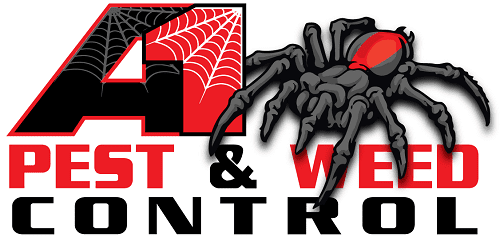Unveiling Australia’s Ultimate Pest Control Arsenal: The Most Popular Method Revealed!
Introduction
Pest control, a critical facet of modern society, plays a pivotal role in preserving agricultural yields, safeguarding public health, and maintaining ecological equilibrium. In the vast expanse of Australia, characterized by its diverse ecosystems and climates, effective pest management takes on a unique significance.
This article delves into the realm of pest control methods in Australia, highlighting the most popular approaches that have emerged to combat a plethora of pest challenges.
Common Pest Challenges in Australia
Australia’s geographical diversity and climatic variations have given rise to a multifaceted spectrum of pests. From voracious crop-eating insects to disease-spreading rodents, these pests pose a significant threat to agricultural productivity, public health, and native ecosystems. The omnipresent menace of pests necessitates the implementation of robust and adaptable pest control strategies.
Evolution of Pest Control Methods
The trajectory of pest control methods in Australia has evolved considerably over time. Indigenous communities, drawing on traditional ecological knowledge, practised rudimentary pest control techniques. With the advent of chemical pesticides post-World War II, the landscape shifted towards more potent yet controversial solutions.
However, the limitations and environmental consequences of these chemicals spurred the development of integrated pest management (IPM) approaches that encompass a holistic and ecologically sensitive outlook.
The Dominance of Biological Control
Amidst the shifting paradigms of pest management, biological control has emerged as a prominent and ecologically sound method. Rooted in the principles of harnessing nature’s checks and balances, this approach utilizes natural predators, parasites, and pathogens to curb pest populations.
The introduction of biocontrol agents, such as ladybugs to control aphids or parasitoid wasps targeting fruit flies, has yielded remarkable results in restoring ecological balance without inflicting harm on non-target organisms.
Pesticides: Balancing Efficacy and Environmental Concerns
While chemical pesticides offer swift and potent pest suppression, concerns surrounding pesticide resistance, toxicity to non-target species, and environmental persistence have led to a reevaluation of their role.
Regulatory frameworks strive to strike a delicate balance between effective pest control and sustainable use of chemicals. Adherence to best practices and the exploration of alternative pesticides, such as biopesticides derived from natural sources, serve as important components of modern pest control strategies.
Innovative Technologies in Pest Control
Advancements in biotechnology have ushered in a new era of pest control possibilities. Genetic modification allows for the creation of pest-resistant crop varieties, reducing the need for chemical intervention. The sterile insect technique (SIT), which involves releasing sterilized insects into the wild, disrupts pest reproduction and curtails population growth.
As gene editing technologies mature, they hold the potential to revolutionize pest population control through precision genetic interventions.
Cultural and Physical Pest Management Practices
Beyond chemical and biological interventions, cultural and physical practices offer invaluable tools in pest management.
By altering planting times, and crop rotations, and employing companion planting strategies, farmers can discourage pest infestations through ecological diversification. Additionally, maintaining hygiene, proper waste disposal and habitat modification can mitigate pest breeding grounds, reducing their prevalence.
Organic and Eco-Friendly Approaches
The burgeoning demand for organic produce has spurred interest in organic pest control methods. Natural repellents, like neem oil or diatomaceous earth, provide environmentally friendly alternatives to synthetic chemicals.
Biopesticides derived from plants, bacteria, or fungi target specific pests while minimizing collateral damage to beneficial organisms. By embracing these approaches, consumers and farmers alike contribute to reduced chemical exposure and a healthier ecosystem.
Community Engagement and Education
Effective pest control transcends individual efforts and necessitates community engagement and education. Raising public awareness about the importance of prevention, early detection, and appropriate pest management practices empowers communities to participate actively in safeguarding their surroundings.
Collaborative endeavours, such as neighbourhood-wide pest control initiatives, harness collective action to tackle pest challenges effectively.
Case Study: Successful Pest Eradication Campaigns
Australia’s vast landscapes have witnessed successful pest eradication campaigns that underscore the effectiveness of concerted efforts. Notable among these is the extensive rabbit eradication in iconic regions like Macquarie Island.
Targeted campaigns, bolstered by advances in technology and collaboration between government agencies and local communities, demonstrate the potential for eradicating invasive pests and reclaiming native habitats.
Future Prospects in Pest Control
The trajectory of pest control methods in Australia is poised for further innovation. The integration of artificial intelligence and data-driven analytics promises real-time insights into pest dynamics, aiding timely intervention.
Pheromones and behaviour-modifying chemicals, capable of disrupting mating patterns and altering pest behaviour, hold untapped potential. Furthermore, the intersection of climate change and pest dynamics necessitates adaptive strategies to counteract the shifting patterns of pest prevalence.
Conclusion
In the vast and diverse landscape of Australia, pest control emerges as a multifaceted challenge that demands innovative and adaptive solutions. The evolution from traditional practices to modern approaches reflects the dynamic nature of pest management.
As Australia continues to grapple with a myriad of pest challenges, harmonious coexistence with nature necessitates a commitment to sustainable, effective, and ecologically sensitive pest control methods.
Through continued research, community engagement, and the judicious utilization of diverse strategies, Australia can pave the way towards a more harmonious equilibrium between humans and the intricate web of life that surrounds them.



